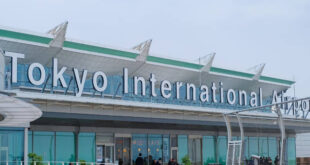The air we breathe is polluted
A recent study out of Johns Hopkins University seems to indicate the presence of a significant amount of air pollution being emitted by cruise ships as measured from areas where passengers frequent.
The study, which was limited in scope, as it only included four ships, showed the presence of particulate matter, some of which contained ultrafine particles which can cause airway inflammation and immunological reactions in the lungs and can travel through the bloodstream to affect organs.
The four ships were all Carnival Corporation ships, and included the Carnival Liberty, Carnival Freedom, Holland America’s Amsterdam and the Emerald Princess.

The air samples were taken in the bow area and two areas in the stern, aft of the ship’s smokestack including areas designated for exercise (running tracks, basketball court, etc.) The studies (multiple samples throughout the identified cruise showed that the aft areas of a ship in motion, showed more presence of pollution than the bow areas.

In 2015, Alaska media detailed how Carnival Cruise Corporation ships, including those from Carnival Cruises, Princess Cruises and Holland American Cruise Line had been fined more than $37,500 for each instance of pollution exceeding allowable standards.
Air pollution equal to Beijing

What was surprising was that the level of pollution and particulate matter readings were on a par with the pollution one finds in Beijing, China.
What does it mean for cruisers?
Cabins to the aft of the smokestack of a given ship are more likely to be on the receiving end of the exhaust from the ships engines, which per this study will present to the passenger (and crew) air polluted at the level of a city known to have some of the worst air pollution in the world, Beijing.
When making your reservations, do so with this knowledge in hand.
From this writer’s experience, with a good number of ocean cruises under his belt on the ships of both Holland America and Princess Cruise lines, the air pollution in the Casino due to cigarettes seemed to be higher than on the aft-stateroom’s balcony, though I do recall an occasional morning when the deck of the balcony had black particles upon it, no doubt the air pollution referenced in the Johns Hopkins study.
Read the full study: An Investigation of air pollution on the decks of 4 cruise ships
 Travel Securely Securely Travel
Travel Securely Securely Travel


